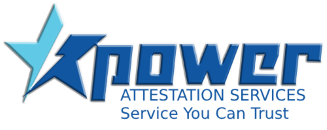While many business owners and entrepreneurs understand the importance of sales and profit, they may not understand why cash flow is so important. Understanding operational cash flow is critical for businesses looking to run more efficiently and reduce outstanding debts. Even if a company has a high-profit margin, it may still have a low cash flow. This can result in overspending and other financial issues.
1. Carefully plan your budget.
Haskell stated, “The secret to running a business is not spending more than you bring in.”. A budget keeps track of when you earn and spend money. It ensures that you have enough money to cover your expenses. Consider your revenue first: How much money is coming into your business? Then there are the costs: How much money do you spend on fixed and variable expenses? Rent and insurance are fixed costs that do not change, whereas commissions are variable costs. The difference between revenue and expenses is defined as profit. On a daily, weekly, and/or monthly basis, you want to keep track of aboutpenses for your goals. Download a sample budget spreadsheet
2. Establish a cash reserve
“‘ What if I break my leg or my husband and I have a baby?’ I used to wonder. ‘What if my espresso machine breaks?’ “That’s $15,000,” Haskell explained. Those “what ifs” ensured she had money saved for the unexpected. Saving a portion of your sales enables you to budget for unanticipated expenses or investment opportunities.
3. Reduce expenses wherever possible.
Look for ways to reduce production costs or save money on business expenses if you manufacture goods. “It’s a balance of quality and affordability,” Haskell explained, adding that she experimented with different coffee brands and pastries before settling on ones she’d eat and drink herself. “You must create your vision statement. “I’d rather sell fewer items and be proud of what we sell,” she explained.
4. Leasing vs. buying equipment.
Leasing rather than purchasing equipment, such as a $15,000 espresso machine, can help you keep more cash on hand until your business is more established.
5. Bargain with vendors.
In some cases, you may be able to pay suppliers or vendors in installments. Extending your payables to every 60 or 90 days may give you the breathing room you need to save more money in the long run.
6. Increase the frequency with which you invoice.
On the other hand, try to get paid as soon as possible. No rule says you have to invoice every month. Ask for “payment upon receipt” instead.
7. Automate your payables and receivables.
Digitizing your payments and invoices can be a more convenient, secure, and time-efficient way of receiving and paying cash into and out of your account. Submit online invoices for easier and faster payments, and set up auto-pay for bills that are due on a specific date. You can also use digital payment services to keep better track of your expenses and account balances. Make sure of all certificate attestation of your payment.
8. Give business customers incentives.
Even if some business owners charge late fees for unpaid invoices, you may still be cash-strapped (and affect your business relationships). Instead, make receivables more appealing by providing a discount to customers who pay on time.
9. Apply for a business credit card.
You can keep better track of your expenses and use rewards programs such as cashback to offset some of your costs.
10. When times are good, apply for a loan.
Don’t put off getting a small business loan until it’s too late; instead, plan while the business is good. You may be able to qualify for lower interest rates and have a better relationship with your bank as a result of your situation. In terms of paying employees, purchasing supplies, and funding operations, a line of credit may provide you with more flexibility than a traditional loan. Find the best loan for you.
11. Determine your future cash flow.
The costs of inventory, payroll, and operations all add up. Project one to two years into the future to gain a better understanding of how your cash flow will affect your financial health. Visit Visa’s Cash Flow Tool to see your projected cash flow, detect anomalies, and receive notifications about unexpected bills, late payments, and other issues.
12. Create an emergency plan.
You can keep your business running in the event of an unexpected disaster if you have a plan in place. Prepare your employees for the possibility of an emergency, such as a weather or technical disaster, and have a backup plan in place.
13. Make contact with investors.
By providing cash or loans, investors can help prevent cash flow problems. They can also assist you in your development by providing knowledge, experience, and relationships. Look into groups and connect with professionals in your field.
